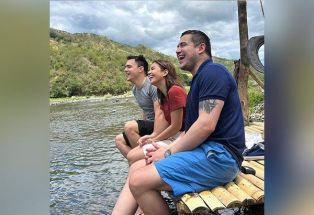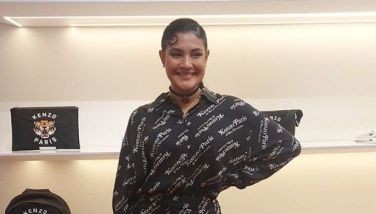A perilous journey from Basilan to Batangas
On a visit early this year to the Badjao village just outside of Batangas City proper, we had stumbled on a believe-it-or-not story that would be perfect material for the indie film project that had since haunted our dreams. But apparently the time wasn’t ripe for it. We returned again last week and on this occasion would encounter the tribe’s leader, speak with his wife and children and meet the dozens of relations each family had produced.
Their chieftain Daihari Elaji of the Samal tribe shared with us the long and perilous journey they took from Basilan when 18 families decided in 1983 to leave their province after constant warfare made it impossible to live in peace. The journey by boat led to Zamboanga and on to Cebu with various stops along the way in search for the perfect settling ground. After Cebu came Masbate, then Sorsogon and a stay of five years. Final stop was the coastal barangay of Simlong and on to the town of Malitan, Barangay Wawa in Batangas where they have lived for the past 30 years.
“What did you find here in Batangas that made you stay for good,†we asked Daihari. “The people are kind and helpful,†smiled the chief who lives in an old shack that must have seen better days, surrounded by his family on similar-looking homes on stilts one easily associates with the Badjao seafarers of Mindanao. A young man, who was putting the finishing touches on the boat he had made, said he has many orders for such boats to complete. “We go to school for free,†shyly answered the 18-year-old Elna Telaji, a sixth grader at the Malitan Elementary School, after much prodding from her mama, 39-year-old Zoida Tandi.
According to the Thesaurus, Sama is the all-encompassing term for a group that includes the tribes from the Philippines, Sabah in North Borneo and Malaysia. Their combined population is placed at between 570,000 to one million. Researcher Najeeb Saleeby, in his book, called Samals as the boat people who brought Sharif Kabungswan to Cotabato continuing on to Davao. Antonio Pigafetta, the Italian explorer and journal keeper who travelled with Ferdinand Magellan to the East Indies in search of spices, wrote having sailed through an island called Zamal.
In pre-Hispanic times, there didn’t seem to be much distinction between the Samals and the Badjaos. Our ancestors practiced Animism where they worshipped the anitos or nature gods. Animism believes there is no separation between the spiritual and material world, and that souls exist not only in humans, but also in animals, plants, rocks, mountains, rivers, as well as in thunder, wind and shadows. The belief in the anitos is also prevalent among the mountain people of Ifugao province, namely Banaue, Batad, Mayoyao, Hapao and Kiangan.
Back in the city after a 10-minute trek through verdant fields being prepared for crop planting, we found ourselves musing on the future of this tribe of Samals, who still fish in the now dirty waters, but have also learned to plant and build boats. What will their future be like? Will education completely alter their nomadic practices? Will they be happy in this new way of life? Why are they no longer called Samals, instead are referred to as Badjao? More importantly, will they have completely lost their identity in this world of cross-pollination of cultures?
(E-mail your comments to [email protected].)
- Latest
- Trending




























 Exclusive
Exclusive